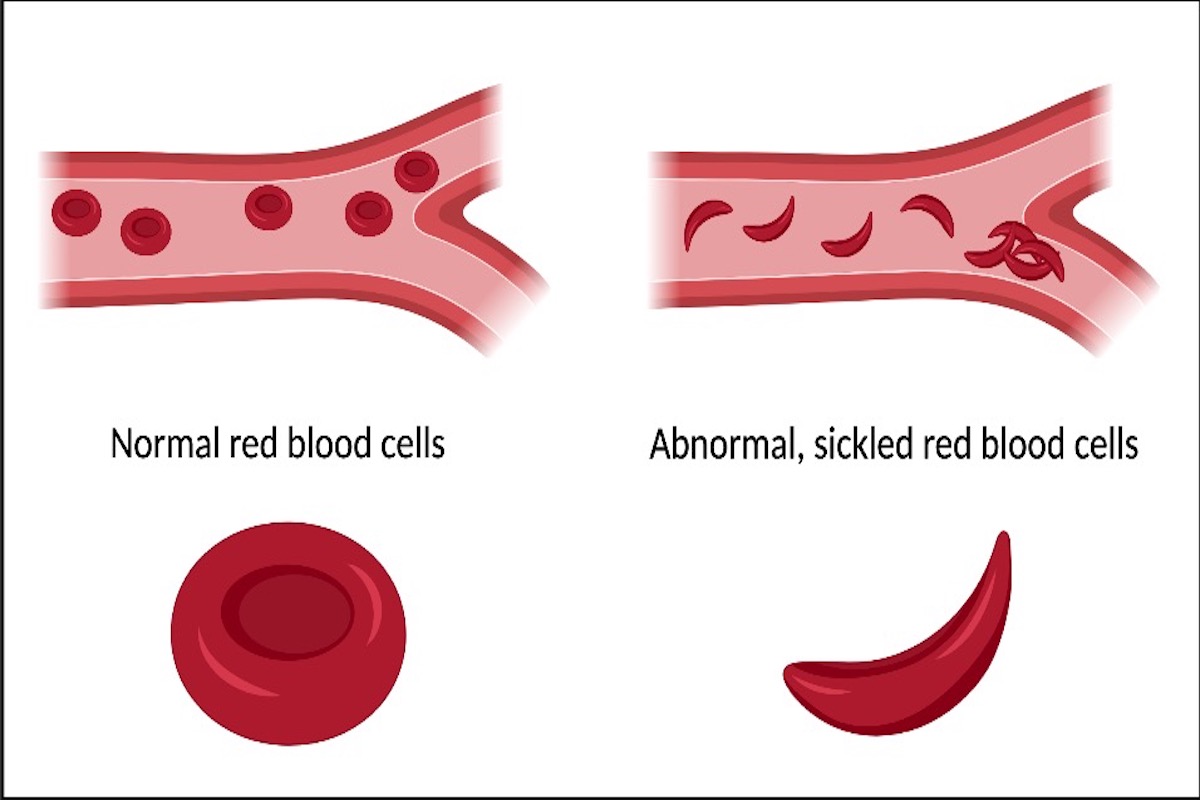We’ve all heard about anemia, but did you know there are several types of anemia? A common type is iron deficiency anemia. Less common types are aplastic anemia and sickle cell anemia. The latter ones can be much worse than others. Sickle cell anemia is a common genetic blood disorder in the United States that affects approximately 100,000 Americans. As there is no cure for this disease it’s important to know how you can recognize it and how someone diagnosed with sickle cell can manage the disease.

What is Sickle Cell Anemia?
Sickle cell anemia is a condition in which the body produces abnormally shaped red blood cells. Normally, red blood cells are round and flexible, allowing them to move easily through the body’s blood vessels. However, in people with sickle cell, the red blood cells become hard and sticky, taking on a crescent or sickle shape. This abnormal shape makes it difficult for the cells to move through the small blood vessels, leading to blockages that can cause pain, organ damage, and an increased risk of infections. Over time, these blockages can also lead to complications such as stroke, lung disease, and damage to the eyes, kidneys, and other organs.
Causes of Sickle Cell Anemia
Sickle cell anemia is caused by a mutation in the gene that produces hemoglobin, a protein found in red blood cells that carries oxygen throughout the body. This mutation causes the hemoglobin to form long, stiff rods that distort the shape of the red blood cells, leading to the characteristic sickle shape. Sickle cell is an inherited condition, which means it is passed down from parents to their children. To develop sickle cell anemia, a person must inherit two copies of the mutated gene, one from each parent. People who inherit only one copy of the gene are carriers of the condition but do not usually experience symptoms.
Who’s At Risk?
Sickle cell anemia is most common among people of African descent, but can also occur in people of Mediterranean, Middle Eastern, or Indian ancestry. It affects approximately 1 in 365 African Americans and 1 in 13 African American newborns in the United States. It also affects smaller percentages of other racial and ethnic groups.
Symptoms of Sickle Cell Anemia
The symptoms can vary widely from person to person and can range from mild to severe. Some people experience few or no symptoms, while others experience frequent and severe pain, infections, and other complications. The most common symptoms include:
- Pain, especially in the chest, abdomen, joints, or bones
- Fatigue and weakness
- Shortness of breath
- Frequent infections
- Delayed growth and development in children
- Yellowing of the eyes and skin (jaundice)
- Swelling and inflammation of the hands and feet
How Is It Diagnosed?
Sickle cell anemia is usually diagnosed through a blood test that checks for the presence of the mutated hemoglobin gene. This test can be performed shortly after birth as part of newborn screening programs, or later in life if symptoms are present or if someone is known to be at risk. In addition to the blood test, doctors may perform other tests to evaluate the extent of organ damage or to monitor for complications such as stroke or lung disease.
Treatment Options for Sickle Cell Anemia
Although there is no cure for sickle cell anemia, a variety of treatment options are available to manage the symptoms and complications of the condition. These can include:
- Pain management, with medications or other therapies to control pain during episodes of pain crisis
- Antibiotics or other medications to prevent and treat infections
- Blood transfusions, to increase the number of healthy red blood cells and reduce the risk of complications
- Hydroxyurea, a medication that can help reduce the frequency and severity of pain crises
This blood disorder is a serious condition with life-threatening complications, such as having an increased risk of getting a stroke, organ damage, and increased risk of certain types of cancer, like leukemia. Make sure to contact your professional healthcare provider when you suspect you’re suffering from this! The right treatment can really help you feel/get better. For more information on this condition and possible treatment options, continue your online search here:

